Yearning for a fresh perspective on biblical harlots? Uncover their surprising roles in faith, redemption, and divine grace.
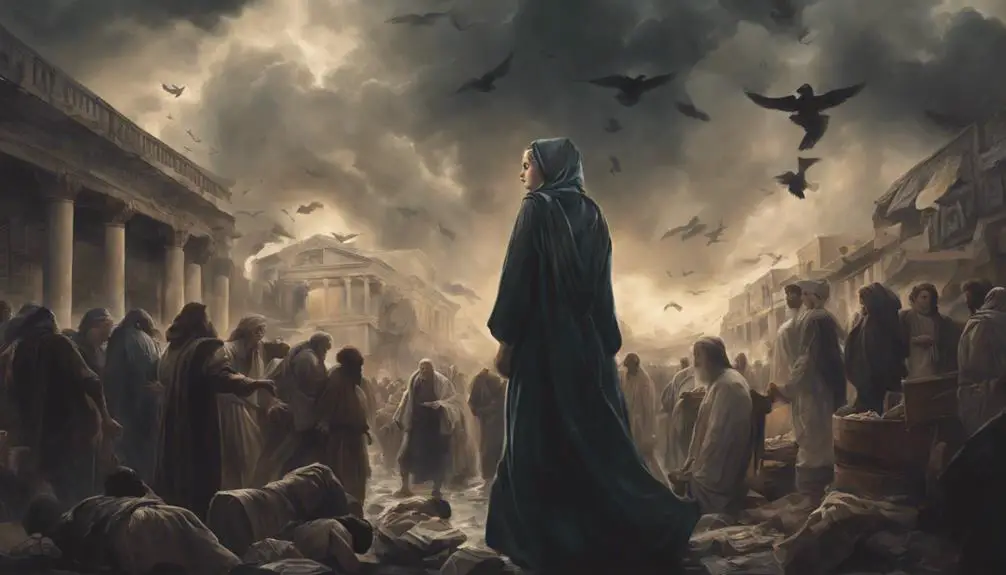
Harlotry in the Bible
In an ancient text revered for its moral compass, harlotry emerges as a recurring theme, an apparent contrast you might find intriguing. You'll encounter harlots in narratives from Genesis to Revelation, from Rahab hiding spies to the enigmatic woman of Babylon.
Yet, is there more to these stories than moral failings and divine retribution? Might they also reveal something of redemption, grace, and the transformative power of faith? Let's embark on an exploration together, a journey that might just challenge your perception of these controversial biblical figures.
Key Takeaways
- Harlotry in the Bible serves as a metaphor for spiritual unfaithfulness and deviation from God's teachings.
- Old Testament narratives use harlot symbolism to illustrate the severity of spiritual infidelity.
- Biblical characters like Rahab and Tamar challenge harlot stereotypes and showcase redemption and devotion.
- Redemptive themes are prevalent in harlotry narratives, emphasizing God's mercy and the transformative power of faith.
Biblical Definition of Harlotry
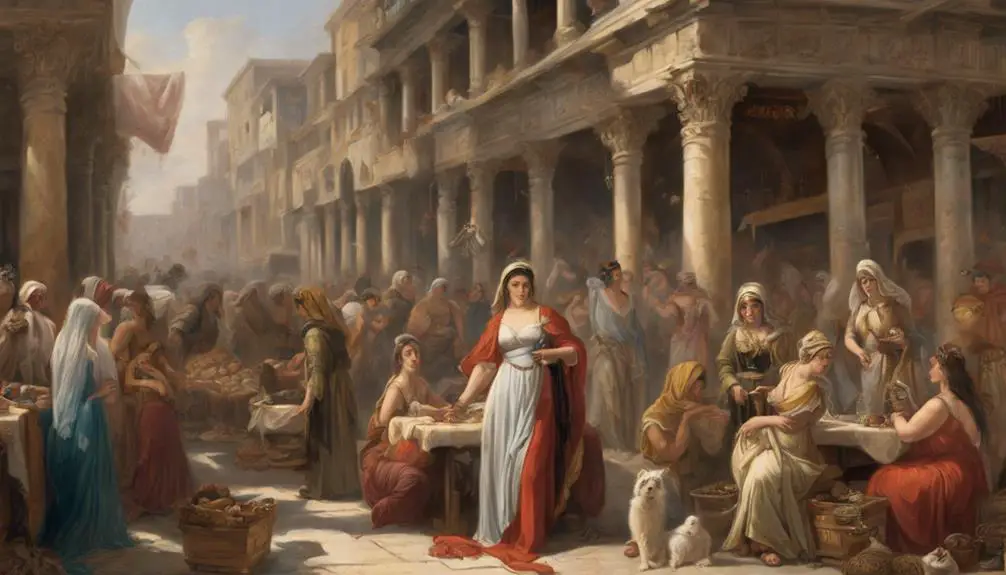
The term 'harlotry' in the Bible encompasses a broad spectrum of meanings, ranging from literal sexual immorality to figurative spiritual idolatry. You'll find it symbolizes not only physical unchastity but also spiritual apostasy. From a cultural perspective, harlotry carries significant symbolic weight in biblical texts, often serving as a metaphor for Israel's religious infidelity.
As you delve deeper into biblical narratives, you'll notice that harlotry symbolism is prevalent. Harlotry is employed as an allegory representing a departure from God, a worship of false idols, or a betrayal of divine trust. It's more than a simple sin; it's a potent symbol of spiritual waywardness, reflecting the cultural perspective of an ancient society where marital infidelity was seen as the ultimate betrayal.
Harlotry in Old Testament Narratives
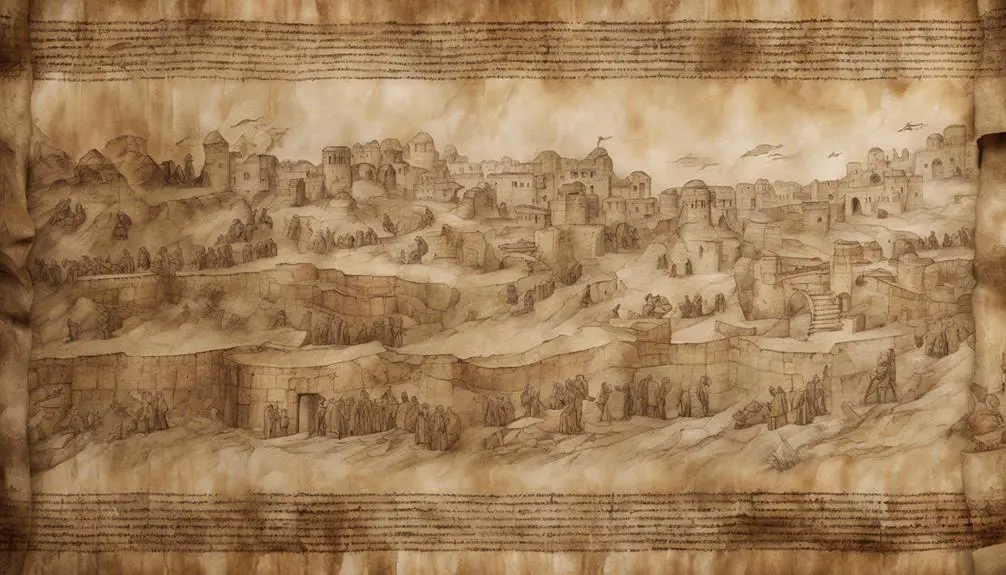
Delving into the Old Testament, you'll encounter numerous instances of harlotry, each highlighting its profound role as a metaphor for spiritual infidelity. This metaphorical usage, within its cultural context, often serves as a stern warning against straying from God's teachings.
In examining the symbolism interpretation, harlotry frequently represents the abandonment of God's covenant for idolatrous practices. It's a stark symbol of spiritual unfaithfulness, akin to a wife's infidelity in a marital bond. For instance, the Israelites' idolatry is often likened to harlotry, portraying a vivid image of unfaithfulness against God, their spiritual spouse.
The cultural context also plays a significant role. In the ancient Near East, harlotry was viewed as a grave sin, carrying severe societal and religious ramifications. Thus, its use in biblical narratives was a powerful tool to convey the seriousness of spiritual transgressions.
The Old Testament narratives of harlotry, therefore, aren't merely historical or moralistic tales. They're complex metaphorical warnings against spiritual infidelity, deeply rooted in their cultural context. To fully understand these narratives, you must factor in both symbolism interpretation and cultural context, enhancing your comprehension of the Bible's teachings.
Notable Biblical Harlots
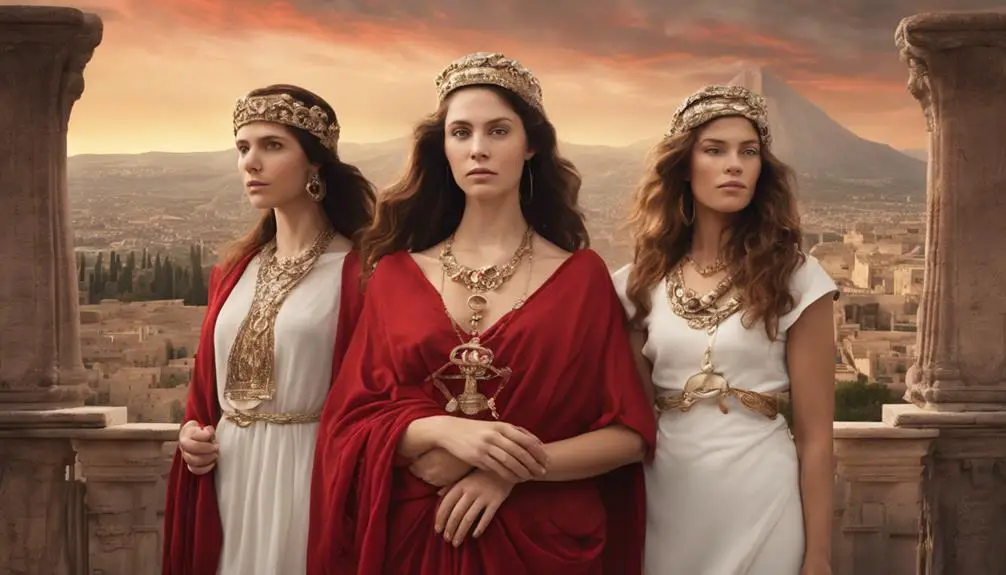
Exploring the lives of notable biblical harlots offers you a deeper understanding of their roles within the scriptures, shedding light on the complexities of their stories and the lessons they embody. This Harlot Archetypes Analysis reveals a spectrum of situations and actions that these women navigated, often embodying roles far beyond simple immorality.
Take Rahab, for instance. In the book of Joshua, she's a Canaanite prostitute who aids Israelite spies, an act that ultimately leads to her salvation. Rahab's story suggests that even those marginalized by society can play crucial roles in divine plans, challenging the typical harlot stereotype.
Another significant figure is Tamar, whose story in Genesis is complex and nuanced. Tamar uses her sexuality to ensure her rights and lineage, demonstrating a cunning that challenges societal norms. Her actions, though controversial, lead to her being recognized as a matriarch in the lineage of David and Jesus.
The Prostitute Saints Study also highlights Mary Magdalene, often wrongly identified as a harlot. Her story, however, is a lesson in redemption and devotion, offering another facet to the harlot archetype.
These analyses underscore the importance of looking beyond labels, to understand the depth and diversity of biblical characters' experiences.
Harlotry in the New Testament
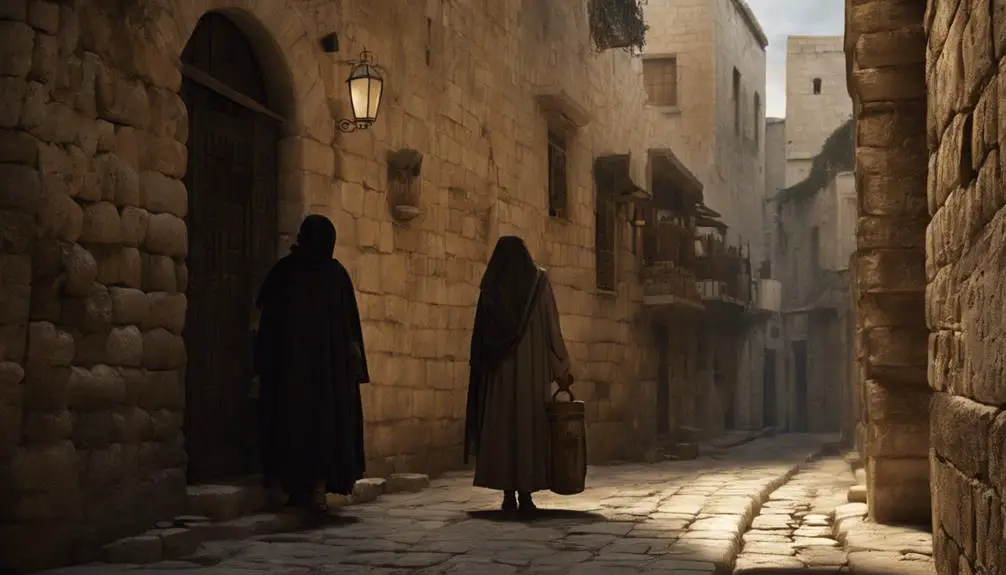
As you delve into the New Testament, you'll encounter instances of harlotry, often cloaked in allegory and rich symbolism. These instances aren't only historical accounts but also serve as metaphoric narratives, underscoring the religious and moral teachings of the time.
Paul's Warnings are particularly noteworthy in this context. He emphatically cautioned against sexual immorality, including harlotry. In 1 Corinthians 6:15-16, he states, 'Do you not know that your bodies are members of Christ himself? Shall I then take the members of Christ and unite them with a prostitute? Never!' Paul's stern admonition not only condemns physical acts of prostitution but also the spiritual unfaithfulness it symbolizes.
Prostitution Practices, prevalent in biblical times, were often associated with pagan worship and were thus vehemently denounced by early Christians. The New Testament depicts harlotry as a betrayal of God's covenant, using it as an allegory for idolatry and spiritual infidelity. This viewpoint was instrumental in shaping early Christian ethics and moral codes, profoundly influencing societal norms and religious practices.
In essence, harlotry in the New Testament isn't merely a historical reference but a metaphorical tool, highlighting the struggle against moral corruption and spiritual infidelity.
Redemptive Themes in Harlotry Stories

While it's easy to dismiss the narratives of harlotry as mere tales of moral decay, you'll find that they often carry potent redemptive themes, illuminating the transformative power of faith and forgiveness. These stories typically follow Grace Patterns, where the harlot's sinful past is redeemed through faith, repentance, and divine mercy.
Take a look at the Prostitution Parables, where the harlot often symbolizes Israel's unfaithfulness to God. However, the narrative doesn't end with condemnation; it moves towards redemption and restoration. This shift from sin to salvation is a key theme in these stories.
Let's delve deeper into a few examples:
Harlotry Stories |
Redemptive Themes |
|---|---|
Rahab the Harlot |
From prostitute to ancestor of Christ |
Prostitute in Proverbs |
Wisdom's triumph over folly |
Gomer in Hosea |
Unfaithful Israel's eventual restoration |
The Prodigal Son |
God's boundless mercy for repentant sinners |
You'll find that these stories not only expose the harsh realities of sin but also offer hope for redemption. In the end, they affirm God's unwavering love and mercy, even for society's outcasts.
Frequently Asked Questions
How Did the Societal Perception of Harlots Impact Their Daily Life in Biblical Times?
Societal perceptions greatly influenced a harlot's daily life. Harlot stigmatization, along with stringent Biblical laws, imposed heavy burdens.
You'd face ostracization, struggle to find acceptance, and endure a life marked by shame and isolation. The societal disdain, coupled with punitive laws, would engender a life fraught with difficulties.
You'd be constantly reminded of your 'sinful' profession and the prejudices attached to it, affecting every facet of your existence.
Are There Any Notable Differences in the Treatment of Harlotry Between Different Translations of the Bible?
When you're comparing different Bible translations, you'll notice variations in how harlotry is treated. This is mainly due to translation interpretation and cultural context.
Some translations might soften the language used for harlots, while others may remain strict to the original text. It's crucial to understand the societal norms and values of the time when interpreting these differences.
Comparative Bible study can help provide a more comprehensive view of the topic.
What Parallels Can Be Drawn Between Harlotry in Biblical Times and Modern-Day Sex Work?
You can draw parallels between historical harlotry and today's sex work by examining the evolution of sexual morality and contemporary interpretations of harlotry. Both then and now, sex work often exists in societies' margins, carrying stigma despite its prevalence.
However, societal views have evolved, with modern perspectives increasingly recognizing sex work as legitimate labor. Still, many moral and legal debates continue, echoing historical controversies.
How Did the Israelites' Religious Beliefs Influence Their Views on Harlotry?
You're examining how religious beliefs shaped Israelite views on harlotry. Their faith influenced their prostitution laws, making it largely unacceptable.
Harlotry symbolism was often used to represent spiritual unfaithfulness to God. Thus, their religion didn't just deem it as immoral, but as a sign of straying from divine allegiance.
This perception heavily influenced their attitudes towards harlotry, setting a negative societal standard for it.
Are There Any Notable Historical Events Influenced by Harlotry in the Bible?
Yes, there are significant historical events influenced by harlotry. The symbolism of harlotry often represents spiritual infidelity. Prostitution laws also played a role.
For instance, Rahab, a prostitute, helped Israelite spies, impacting the Battle of Jericho. Another event is the story of Judah and Tamar, which had lasting genealogical implications. These instances show the influence of harlotry on pivotal events, demonstrating its complex role in shaping history.
Conclusion
You've explored the concept of harlotry in the Bible, tracing its representation from Old Testament narratives to New Testament teachings.
You've discovered notable biblical harlots and their stories, each with their own redemptive arcs.
This journey highlights the Bible's complex portrayal of harlotry, revealing lessons about redemption, mercy, and the transformative power of faith.
It's clear that these tales, while controversial, play an essential role in biblical theology and interpretation.


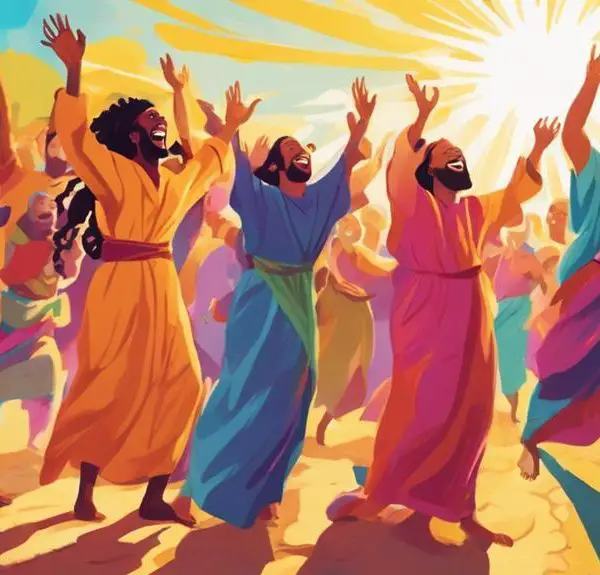
Sign up